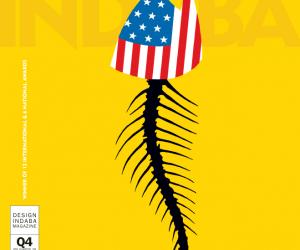First Published in

Logos are possibly the most ubiquitous intervention that the birth of the advertising industry in the 20th century has brought to market. Practically, they offer continuity to business communication but, more importantly, they establish corporate identity.
Dismissing any notions of abstraction, the embossed burnt orange cover of Logology, published by vic:tionary, arouses the physical tangibility of the logo as asset. It’s the type of book that you are reluctant to put down. Rather, it is an irresistibly tactile experience to run your hands over the cover, pressing your fingertips into the logo reliefs as if they were Braille, and flicking the pages forward to back, back to forward, as the orange-edged pages fade to white.
Inside, 15 case studies examine the process of logo development from brief, through concept and final manifestation, to commercial success. The range stretches from grungy and cutesy to slickly minimalist and flagrantly idiosyncratic. Further, there is a 200-page library of logos sorted by font, colour, form and style.
Logology is a must-have exemplar of the possibility of physical production values. Not to mention that it will probably take months, even years, to pour over every perfectly executed logo.
Logos are possibly the most ubiquitous intervention that the birth of the advertising industry in the 20th century has brought to market. Practically, they offer continuity to business communication but, more importantly, they establish corporate identity.
Dismissing any notions of abstraction, the embossed burnt orange cover of Logology, published by victionary, arouses the physical tangibility of the logo as asset. It’s the type of book that you are reluctant to put down. Rather, it is an irresistibly tactile experience to run your hands over the cover, pressing your fingertips into the logo reliefs as if they were Braille, and flicking the pages forward to back, back to forward, as the orange-edged pages fade to white.
Inside, 15 case studies examine the process of logo development from brief, through concept and final manifestation, to commercial success. The range stretches from grungy and cutesy to slickly minimalist and flagrantly idiosyncratic. Further, there is a 200-page library of logos sorted by font, colour, form and style.
Logology is a must-have exemplar of the possibility of physical production values. Not to mention that it will probably take months, even years, to pour over every perfectly executed logo.







